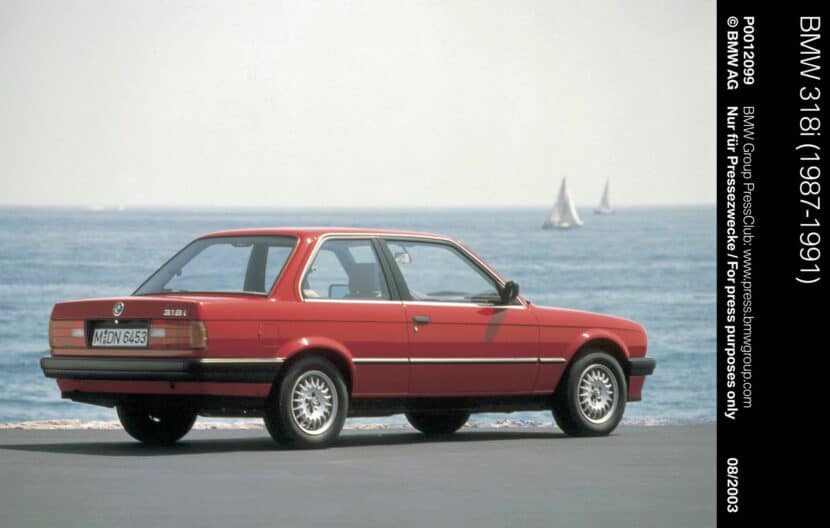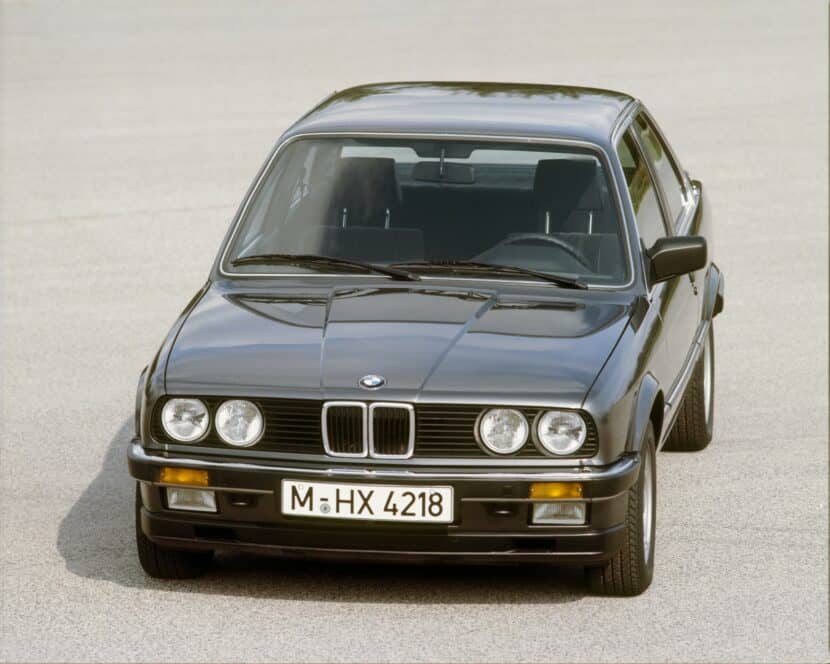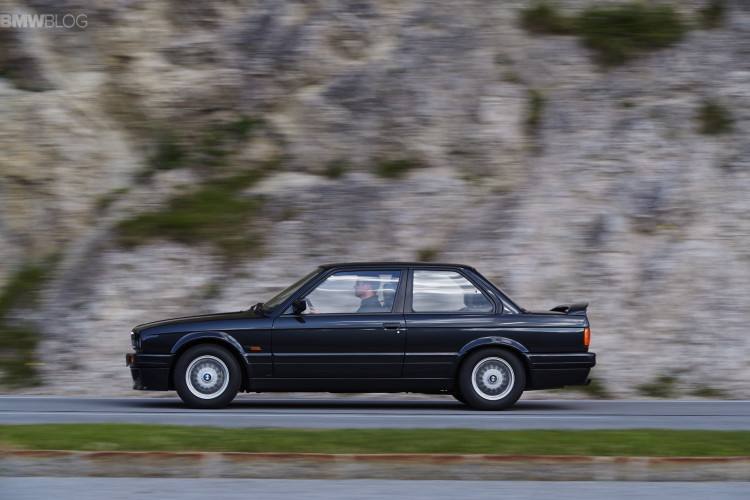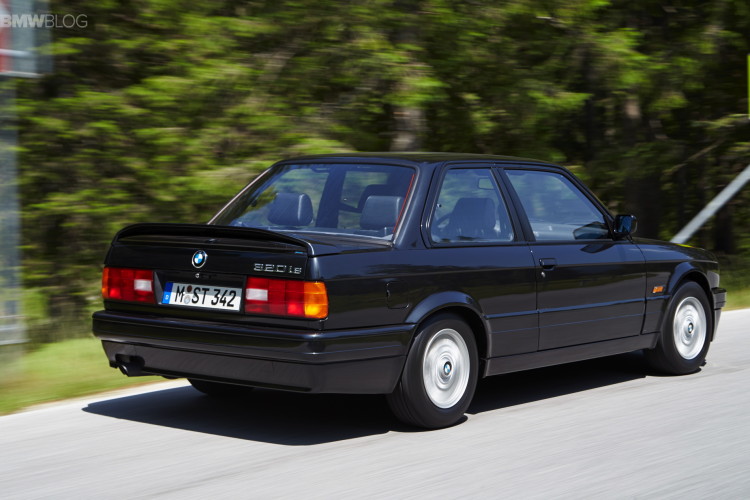Every manufacturer – ones that survived at least – has had that one ‘it’ product, the one that really made them. VW hit the ground running with the Beetle, and so did Ford with the Model T, but BMW? There have been two BMW companies, and they are almost unrelated. The first one ran until around 1960, making stuff like the Baroque Angel 500 saloons, plus the 507, 328, and all the other stuff that we know about but perhaps aren’t that interested in. Elvis had a 507, but I wish it hadn’t been so thoroughly restored.
BMW, as we know it, began in 1962 with the 1500 Neue Klasse – that was their post-bankruptcy Ground Zero start again moment. It was a great car as well and almost perfect out of the box, but improve it BMW did – 1600, 1800, 2000, plus the 2002 and so on. Offshoots like the 2000CS are gorgeous to my eyes, but they were a bit too niche for such a fledgling company, although they wisely got Karmann to build them.
The E30’s Timeless Design
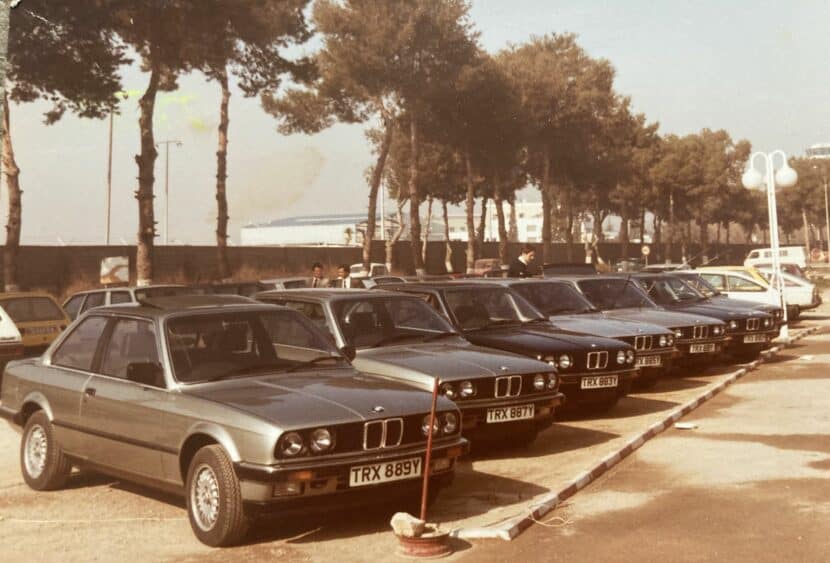
Some say the seventies were a slight fallow period for BMW, where the cars got bigger, heavier, and more expensive but not much faster or better. The E21 3 Series could be a case in point, and the 630CS certainly was – in Europe, the first 3 Series was a range of four-cylinder ’02 replacements, such as the 316, 318, 320, and 320i. They were okay, nicely made and good to drive, but they were designed to take BMW further upmarket, leaving behind the enthusiasts who bought and loved the 2002Tii. The 1978 323i helped redress this, but boy, you really needed the two vital options of a limited-slip differential and the sports Bilstein suspension. Without these, I found the 323i to be a terrible handful with frankly abysmal traction. On another level, there was something about the styling that didn’t quite click – it’s okay but…..
On the face of it, the E30 could have been viewed as simply a thoroughly revised E21, which in one way it was – it certainly broke no new ground. But if the previous year’s E28 5 Series was a very successfully reworked E12, with only the doors, roof skin, and windows carried over, the E30 really was all new with only the bonnet roundel (and maybe the rear one too) carried over. Everything was new and different – every panel, the brakes, suspension, differential, lights, electrics – even the engines were completely revised with lighter blocks, new injection systems, bigger cylinder head ports, and so on. A totally new car might have also warranted a much newer and more radical body shape.
Yet when the E30 was launched in late 1982 to the press, nobody with money to spend was complaining, and in time BMW’s retention of a more traditional and recognizable body shape proved to be a winner. Even when the E36 arrived in 1991, it was still desirable.
Why Was The E30 Successful?
So what was it about the E30 that made it such a huge success? For me, it was a combination of many things, but the neat body shape of the early chrome bumper two-door does it for me. The E21 looks a bit fat in the middle, accentuated by the droopy tail. The E30, though, has a slim wedge shape without an inch of fat. There isn’t a single bad angle, not a line out of place. The smaller headlights, squat grille, bigger tail lights, and the registration number plate moved back above the rear bumper help, and the superb detailing finished it off. Compare it to a 1980 Maserati BiTurbo, and you can see where some of stylist Claus Luthe’s inspiration may have come from.
Early E30 Models in the UK
The E30 arrived in the UK in March 1983 as a 316, a 320i, and a 323i with 90, 122, and 139 bhp. A 318i and a four-door came six months later. The 323i caused some concern as it was 4 bhp down on the old E21 model, and it just wasn’t as lively. The road test car – like most press cars – was carefully but thoroughly ‘run-in’ before delivery to a magazine, and this involved 1000 miles of fast driving to loosen it up to give its best. This had mostly occurred with the nine 320i and 323i cars that were driven from the UK to Valencia in Southern Spain in February 1983, and the 1100 miles would certainly finish the task. Charging along a British motorway at 100+ mph on the way to the ferry port in Portsmouth drew the attention of the motorway police, but having stopped the entire convoy, the patrolman took one look at nine new BMWs, considered the amount of paperwork involved, and let them all go with a stern lecture.
The Miracle Cure: Enhancing the Road Test Car’s Performance
The 323i was upgraded later on in ’83 to 150 bhp, a nice stopgap before the serious 171 bhp 325i arrived in 1985. However, the 1982-built 323i road test car on long-term test to a British magazine showed performance figures not vastly better than a 320i. What to do?
Simple. The car was delivered to a local BMW dealership to be ‘checked over,’ and as soon as the custodian had left, a truck from BMW GB arrived and took it back to the main workshop where it was fitted with the 150 bhp variant exhaust, manifold, ECU, and distributor to effect a miracle cure. Suddenly and with no official explanation, the red 323i (which still exists to this day) found a new lease of life.
A Perfectly Polished Product: Superb Finish and Great Driving Experience
As a car, the E30 was the perfectly polished product. Superbly finished and great to drive, it captured the imagination of the buying public in a way the E21 just didn’t. Early sales figures were strong, and the opening of a third factory at Regensburg for 1986 increased production capacity to the extent that a neat Touring estate, Convertible, and, of course, the M3 could be built without disrupting regular E30 production in Munich. Within three or four years, BMW had the most desirable range of cars in the world.
We’ll probably never see another E30, although to me, the 2014 2 Series Coupe was a kind of reincarnation – the right size, the right everything, and just an excellent all-round product.
It’s also doubtful that any BMW could now attract the interest that the E30 did all those years ago. I saw an E30 before 99.999 percent of the population, and again, it’s to do with that ‘1000 miles running-in’ procedure. It was probably early 1983 and at least a month before the March UK launch that Everett Senior brought home that Henna red 323i road test car. He had to leave BMW’s UK base at 6.30 in winter darkness and have it back again the following morning at Early O’clock to avoid being spotted by too many people – can you imagine the phone photos on Facebook had it existed back then?
[Top image from BMW Group Classic]

